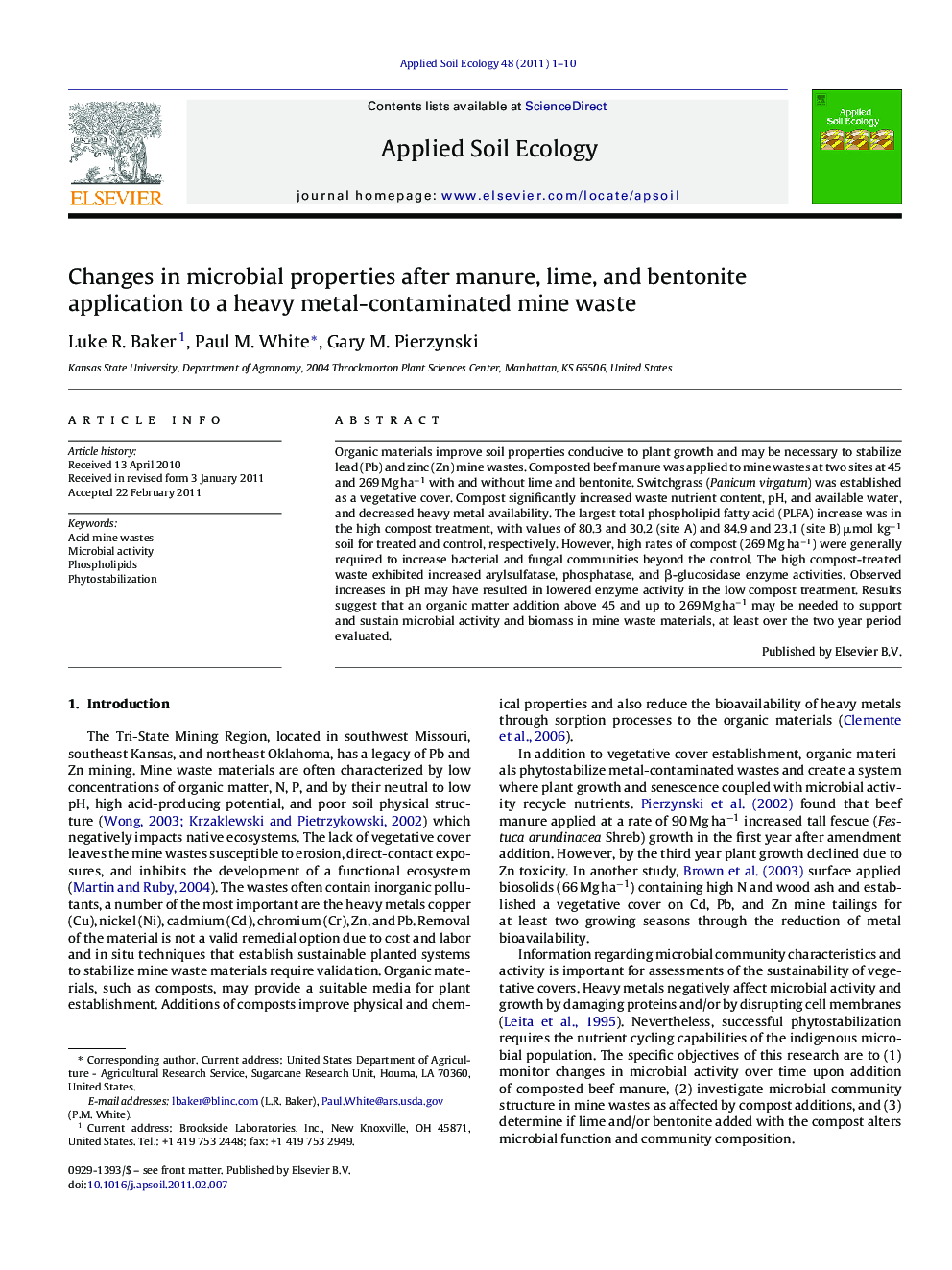| Article ID | Journal | Published Year | Pages | File Type |
|---|---|---|---|---|
| 4382727 | Applied Soil Ecology | 2011 | 10 Pages |
Abstract
⺠Our results indicate that available carbon increased microbial biomass [by chloroform fumigation incubation and by phospholipid fatty acid analysis (PLFA)] and decreased metal bioavailability, and the high rates of compost also stimulated soil enzyme activity. ⺠We saw minimal shifts in microbial community structure as determined by PLFA, but principle components analysis indicated that samples taken from plots treated with different levels of compost grouped together and gram positive and gram negative bacteria appeared to drive the shift. ⺠Our results indicate that large additions of organic amendments (e.g., compost) may be essential to successfully phytostabilize on mine waste soils.
Related Topics
Life Sciences
Agricultural and Biological Sciences
Ecology, Evolution, Behavior and Systematics
Authors
Luke R. Baker, Paul M. White, Gary M. Pierzynski,
